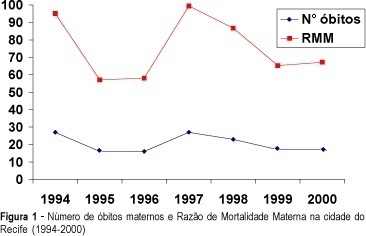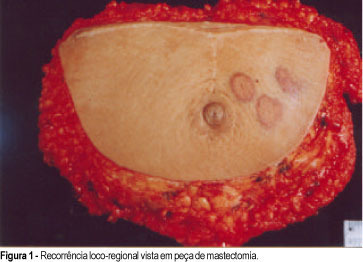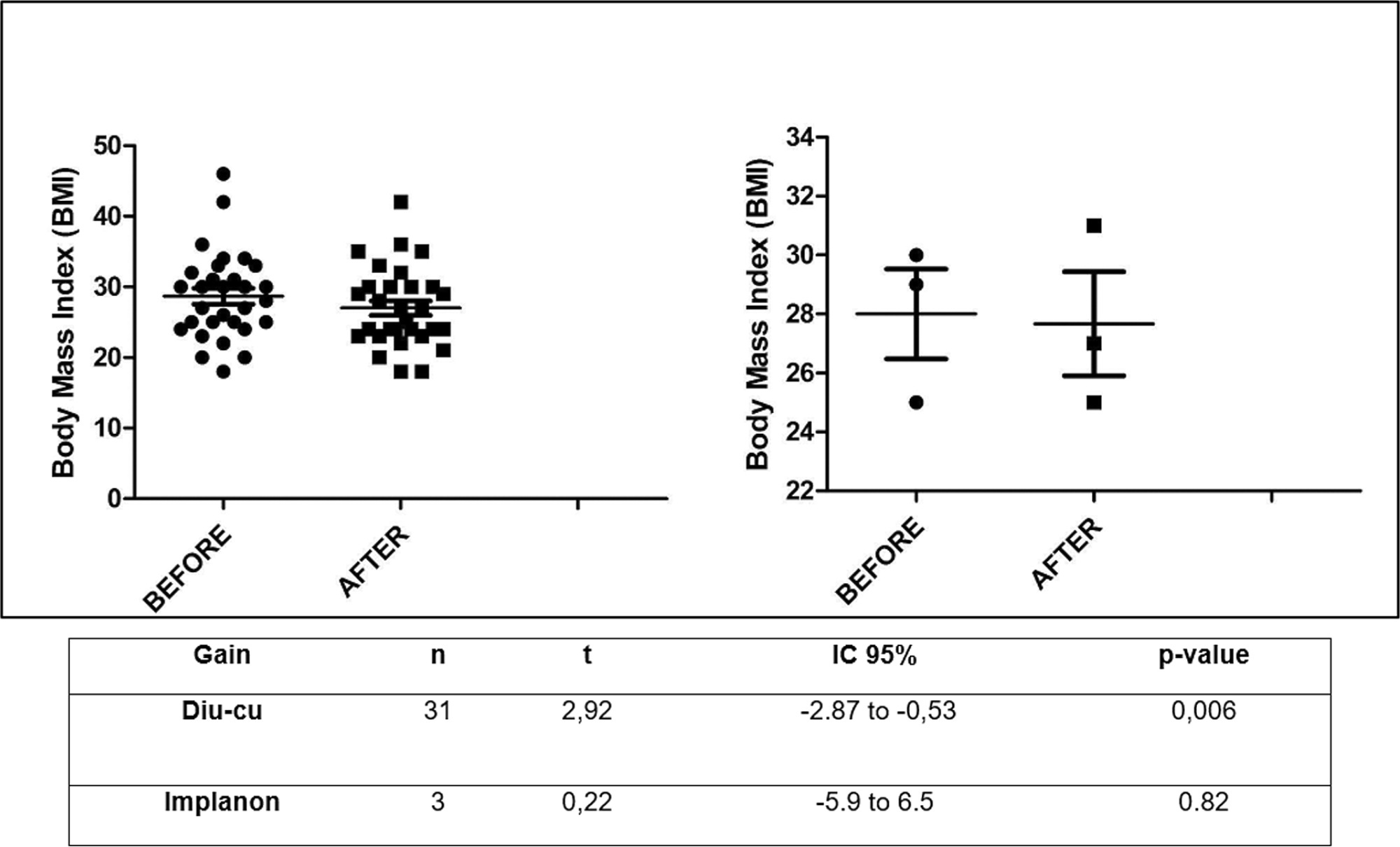Summary
Revista Brasileira de Ginecologia e Obstetrícia. 2002;24(7):455-462
DOI 10.1590/S0100-72032002000700005
Purpose: to determine the Maternal Mortality Ratio (MMR) among women living in the city of Recife, Brazil through the analysis of all death certificates of women aged 10-49 years from 1994 to 2000. To determine the underreporting rate and to study the main characteristics, basic causes, classification and avoidance of maternal deaths. Methods: a descriptive population-based study was conducted and all death certificates of women aged 10-49 years were analyzed and classified as declared or presumed (Laurenti criteria). Clinical records and autopsy data, when available, were studied and basic cause and underreporting rate were determined. Maternal Mortality Ratio was calculated using information on live births from SINASC ("Sistema de Informações dos Nascidos Vivos"). Results: a total of 144 maternal deaths were identified (declared=104; presumed and confirmed after investigation=44). The Maternal Mortality Ratio was 75.5 per 100,000 live births. The underreporting rate was 27.8%. A predominance of direct causes was observed (about 69%) and the most frequent causes of death were hypertension (19%), hemorrhage (16%) and infection (11%). About 82% of the deaths were considered avoidable by adequate antenatal, delivery and post-partum care. Conclusions: Maternal Mortality Ratio is high in the city of Recife, Brazil and the underreporting rate is still high. Direct obstetric causes and avoidable deaths are predominant. There is a lack of adequate antenatal, delivery and post-partum care.

Summary
Revista Brasileira de Ginecologia e Obstetrícia. 2000;22(7):455-458
DOI 10.1590/S0100-72032000000700009
Primary angiosarcoma of the breast is a rare tumor, which appears between 14 and 82 years, with an average of 35 years of age. Its predominant clinical aspect is a painful mass with diffuse increase in the breast and violet or blackened color. Equally to other cases of sarcoma, the medium size of the lesion is approximately 5 cm at the diagnosis. Histologically, it is characterized by the proliferation of endothelial cells that form vascular channels linked to each other infiltrating glandular structures and fatty tissue. Its histological diagnosis is difficult and not always the right diagnosis is immediately established, mainly in the cases of a low malignancy degree, due to limited biopsy material. Because of the difficult diagnosis and aggressivity, it is a neoplasia with ominous prognosis, due to frequent metastasis. In our service, a 18-year-old patient presented with a painful lump which grew quickly. It was biopsied and a hemangioma was diagnosed, a wide excision being indicated. Three months later, she suffered a tumoral relapse, that was biopsied again and mastectomy was indicated, because it was an angiosarcoma with low degree of malignancy. After other relapses, chemotherapy was indicated and later, radiotherapy. During radiotherapy she developed new metastases, and died of pulmonary metastasis.

Summary
Revista Brasileira de Ginecologia e Obstetrícia. 2015;37(10):455-459
DOI 10.1590/SO100-720320150005271
To analyze the obstetrical and neonatal outcomes of pregnancies with small for gestation age fetuses after 35 weeks based on umbilical cord nucleated red blood cells count (NRBC).
NRBC per 100 white blood cells were analyzed in 61 pregnancies with small for gestation age fetuses and normal Doppler findings for the umbilical artery. The pregnancies were assigned to 2 groups: NRBC≥10 (study group, n=18) and NRBC<10 (control group, n=43). Obstetrical and neonatal outcomes were compared between these groups. The χ2 test or Student's t-test was applied for statistical analysis. The level of significance was set at 5%.
The mean±standard deviation for NRBC per 100 white blood cells was 25.0±13.5 for the study group and 3.9±2.2 for the control group. The NRBC≥10 group and NRBC<10 group were not significantly different in relation to maternal age (24.0 versus 26.0), primiparity (55.8 versus 50%), comorbidities (39.5 versus55.6%) and gestational age at birth (37.4 versus 37.0 weeks). The NRBC≥10 group showed higher rate of caesarean delivery (83.3 versus 48.8%, p=0.02), fetal distress (60 versus 0%, p<0.001) and pH<7.20 (42.9 versus 11.8%, p<0.001). The birth weight and percentile of birth weight for gestational age were significantly lower on NRBC≥10 group (2,013 versus 2,309 g; p<0.001 and 3.8 versus 5.1; p=0.004; respectively). There was no case described of 5th minute Apgar score below 7.
An NRBC higher than 10 per 100 white blood cells in umbilical cord was able to identify higher risk for caesarean delivery, fetal distress and acidosis on birth in small for gestational age fetuses with normal Doppler findings.
Summary
Revista Brasileira de Ginecologia e Obstetrícia. 2016;38(9):456-464
To evaluate the anatomic and functional results of a laparoscopic modified Vecchietti technique for the creation of a neovagina in patients with congenital vaginal aplasia.
Retrospective study of nine patients with congenital vaginal aplasia submitted to the laparoscopic Vecchietti procedure, in our department, between 2006 and 2013. The anatomical results were evaluated by assessing the length, width and epithelialization of the neovagina at the postoperative visits. The functional outcome was evaluated using the Rosen Female Sexual Function Index (FSFI) questionnaire and comparing the patients' results to those of a control group of 20 healthy women. The statistical analysis was performed using SPSS Statistics version 19.0 (IBM, Armonk, NY, USA), Student t-test, Mann-Whitney U test and Fisher exact test.
The condition underlying the vaginal aplasia was Mayer-Rokitansky-KüsterHauser syndrome in eight cases, and androgen insensitivity syndrome in one case. The average preoperative vaginal length was 2.9 cm. At surgery, the mean age of the patients was 22.2 years. The surgery was performed successfully in all patients and no intra or postoperative complications were recorded. At the first postoperative visit (6 to 8 weeks after surgery), the mean vaginal length was 8.1 cm. In all cases, the neovagina was epithelialized and had an appropriate width. The mean FSFI total and single domain scores did not differ significantly from those of the control group: 27.5 vs. 30.6 ( total); 4.0 vs. 4.2 (desire); 4.4 vs. 5.2 (arousal); 5.2 vs. 5.3 (lubrication); 4.2 vs. 5.0 ( orgasm); 5.3 vs. 5.5 (satisfaction) and 4.4 vs. 5.4 ( comfort ).
This modified laparoscopic Vecchietti technique is a simple, safe and effective procedure, which allows patients with congenital vaginal aplasia to have a satisfactory sexual activity, comparable to that of normal controls.

Summary
Revista Brasileira de Ginecologia e Obstetrícia. 2014;36(10):456-460
DOI 10.1590/SO100-720320140005075
To identify the frequency of polymorphism in the IL-10 gene, rs1800896 (-1082 A/G), in women with preeclampsia (PE) and in women in a control group and to associate the presence of this polymorphism with protection against the development of PE.
This was a case-control study conducted on 54 women with PE, classified according to the criteria of the National High Blood Pressure Education Program, and on 172 control women with at least two healthy pregnancies. The proposed polymorphism was studied by the technique of real time polymerase chain reaction (qPCR), with hydrolysis probes. Statistical analysis was performed using the χ2 test. Odds ratio and confidence interval of 95% were used to measure the strength of association between the studied polymorphism and the development of PE.
Statistically increased frequency of the AG genotype was observed among control women (85 versus 15% in women with PE). The G allele was significantly more frequent among control women than PE women (χ2test, p = 0.01). The odds ratio for carriers of the G allele was 2.13, indicating a lower risk of developing PE compared to non-carriers.
Thus, an association is suggested to occur between the presence of the G allele of the polymorphism in the IL-10 rs1800896 (-1082 A/G) gene and protection against the development of PE. More studies investigating the contribution of these variations and the mechanisms by which they affect the risk of developing PE still need to be undertaken.
Summary
Revista Brasileira de Ginecologia e Obstetrícia. 2005;27(8):456-460
DOI 10.1590/S0100-72032005000800004
PURPOSE: to analyze the effectiveness and safety of exclusive hospital parenteral antibiotic therapy to treat puerperal endometritis in a population of low socioeconomic level. METHODS: a prospective clinical trial evaluated 21 puerperae with a diagnosis of postpartum endometritis, whose deliveries occurred at a university hospital by cesarean section (52.4%) or normal delivery (47.6%). The sample was characterized by low socioeconomic and educational levels. The patients were submitted to a regimen of exclusive parenteral antibiotic, only during the hospitalization period (ATP-EX group). These results were compared with results obtained in a historical cohort in the same hospital (20 cases) submitted to a regimen of hospital parenteral antibiotic therapy complemented with ambulatory oral treatment (ATP+VO group). The patients were evaluated clinically on the occasion of periodic return visits in order to identify cases of recurrence and infectious complications. RESULTS: one patient from the ATP+VO group needed to be readmitted to the hospital on the 6th day after her discharge from the hospital with a diagnosis of endometritis recrudescence. No complications were observed among patients from ATP-EX group. CONCLUSION: for the treatment of puerperal endometritis, there was no additional advantage in using supplementary oral antibiotic therapy after patient discharge. The results using exclusive parenteral antibiotic treatment during hospitalization time indicate that it is effective and can be safely used in a population of low socioeconomic level.
Summary
Revista Brasileira de Ginecologia e Obstetrícia. 2023;45(8):456-464
Evaluate the different perspectives that involve the choice of long-acting reversible contraceptives (LARCs), the issues related to this process and the consequences of deciding one method in the women's in the primary health care (PHC) center in Sousas, a district in Campinas, SP (Brazil).
This is an analytical cross-sectional study, it was performed at the PHC in Sousas. Data were collected through the analysis of medical records and interviews with women who live in Sousas and had the insertion of the copper intrauterine device (IUD) (D) from April 2021 to April 2022 or the etonogestrel implant (I) from May to December 2022. The study was approved by the Research Ethics Committee of the Medical Science School at the State University of Campinas (UNICAMP).
Reason for choosing this LARC: medical (D: 52%; I: 100%), easy adhesion (D: 71%; I: 67%), effectiveness (D: 55%; I: 100%). Indication by health professionals (D: 65%; I: 100%). And improvement of clinical characteristics: mood (D: 77%; I: 67%), body mass index (BMI; D: 52%; I: 33%), and libido (D: 84%; I: 67%).
It is suggested that women tend to decide between LARCs when guided by their doctor or PHC health professionals, and they select LARCs because of the ease of use and low failure rates. Therefore, this study highlights how LARCs can positively interfere in the aspects that pervade contraception, such as BMI, libido, and mood.

Summary
Revista Brasileira de Ginecologia e Obstetrícia. 2004;26(6):457-462
DOI 10.1590/S0100-72032004000600006
OBJECTIVE: to assess the ability of Pap smear and hybrid capture II (HCII) to detect clinically significant cervical lesions (CIN2/3) in women referred to hospital due to atypical squamous cells of unknown significance (ASCUS) or low-grade squamous intraepithelial lesions (LSIL). METHODS: a cross-sectional study comprising 161 women referred to the Taubaté University Hospital due to ASCUS/LSIL, between August 2000 and September 2002. All women responded to a questionnaire regarding sociodemographic and reproductive characteristics and were subjected to gynecological examination with specimen collection for Pap test and HCII, along with colposcopy and eventual cervical biopsy. The relationship between HCII results and age, use of condom, oral hormonal contraception, and smoking were evaluated by the chi-square test. The sensitivity, specificity, positive and negative predictive values of both Pap test and HCII were calculated. All calculations were performed within 95% confidence intervals. RESULTS: sixty-seven percent of the women that tested positive for HPV were less than 30 years old. Pap smear and HCII showed the same 82% sensitivity in detecting CIN2/3 when the threshold for a positive Pap result was ASCUS, LSIL or HSIL. Pap smear specificity and positive predictive values were substantially increased when only HSIL results were considered as positive (from 29 to 95% and 12 to 50%, respectively). These figures were superior to those of HCII, but at the expense of an expressive loss of sensitivity (from 82% to 41%). CONCLUSIONS: our results substantiate the potential of HCII in detecting CIN2/3 among women referred due to ASCUS/LSIL.